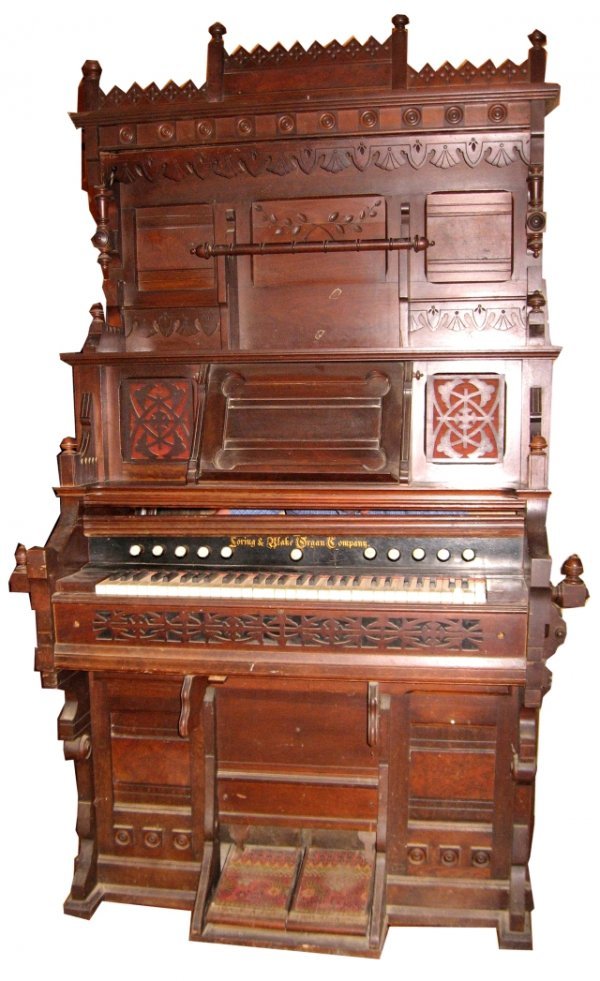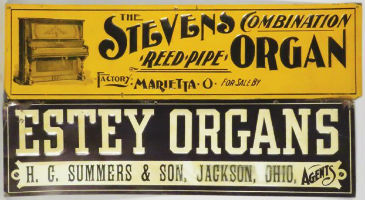
HANOVER, Mich. (AP) – Reed organs aren’t expensive, whether you buy them or buy the materials to restore them.
Sharon Folkerth from the Conklin Reed Organ Museum told MLive that the real cost is in the labor hours it takes to keep them playing, as the average reed organ takes 100 hours to restore.
To meet this demand, 10 to 20 volunteers come to the Hanover Township museum for a weekend every month from March to October. Some from as far as California, Iowa and Ontario to help keep the museum’s instruments up and running.
Ninety-nine functional reed organs sit inside the Reed Conklin Organ Museum – which is the former site of Hanover High School.
Another 40-50 sit in the garage, waiting to be repaired. The group focused on two organs in the most recent workshop on July 22-23.
The museum has the largest public collection of restored and working reed organs in the country.
Reed organs, also known as pump organs, differ from the less portable pipe organs in the way the sound is produced. They were in their heyday in the mid-to-late 1800s, Folkerth said, with many companies going out of business in the 1920s.
“One of the last things that really kept reed organs going was World War II, because they needed chaplain organs that could be portable and played without electricity,” Folkerth said.
To make sound, reed organ players must continuously pump the foot pedals. Instead of pumping in rhythm with the music, experts change the speed to affect the volume of the music.
“It is different, because your expression is through the feet,” said organist Rodney Jantzi. “With this, you’ve got to disconnect your feet from your brains and connect them to your emotions. Your feet become the artistic expression of the instrument rather than the rhythm of the instrument.”
Just like during normal museum hours – which are from 8 a.m. to noon on weekdays and 1 to 5 p.m. on Sundays May through October – Folkerth reminds people that the organs were not built to sit idly.
Jantzi and other volunteers take a break from the restoration process to play the variety of reed organs at the museum. While some volunteers don’t play and only bring mechanical skills, many still gather around to listen.
Nancy Varner, who works with the Reed Organ Society, said the instruments strike a chord from many people’s childhoods.
“I think some of them have gotten involved because they remember from their youth grandma had one in the parlor, and maybe the grandkids got to play it, maybe they did not,” Varner said. “But they remember that. Then they came to be quite available, they began to get them.”
Varner tells stories of people having to sell their reed organ during The Depression to buy pigs for food or to break down the instrument to use for firewood in desperate times.
Before phonographs or stereos, live music was the only form of music in homes. Jantzi said a family could buy a reed organ for $29. Many churches also found it as an affordable alternative to pipe organs, Jantzi said.
While the volunteers do minimal casework on the organs, many have years of experience in repairing reeds and other components to the instruments. They even welcome and find work for those not mechanically inclined.
“We got bit by the reed organ bug,” Varner said. “We have all learned that they’re like potato chips: You can’t have just one. Sorry, but you can’t.”
___
By TAYLOR DESORMEAU, MLive
Information from: Jackson Citizen Patriot, http://www.mlive.com/jackson
Copyright 2016 Associated Press. All rights reserved. This material may not be published, broadcast, rewritten, or redistributed.
AP-WF-08-01-16 2011GMT


